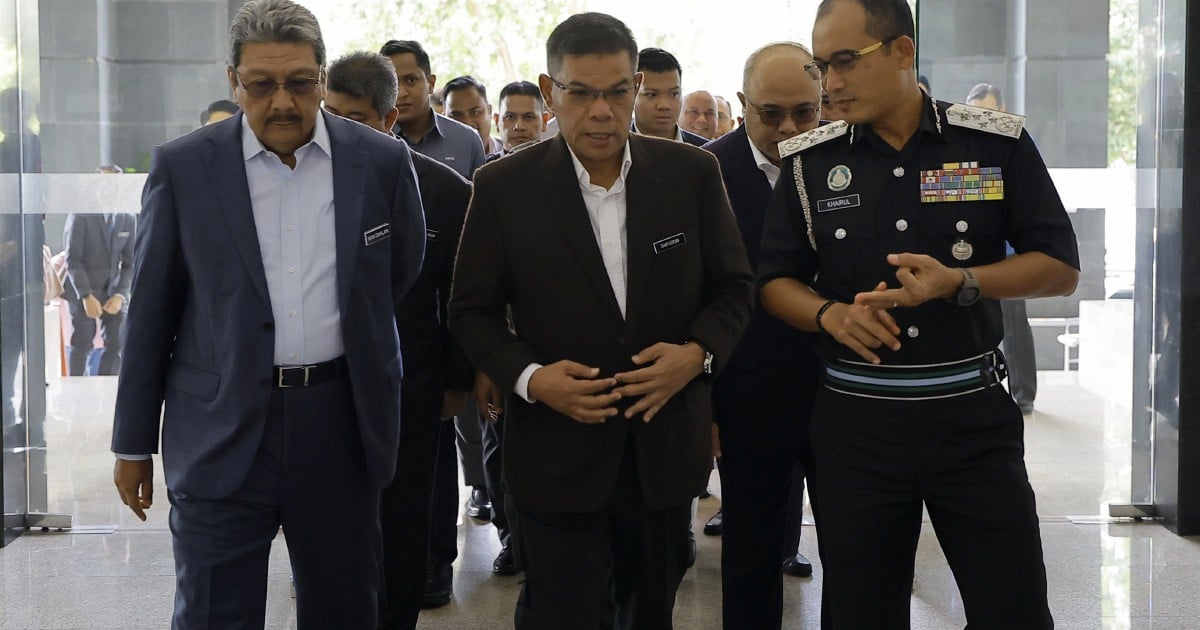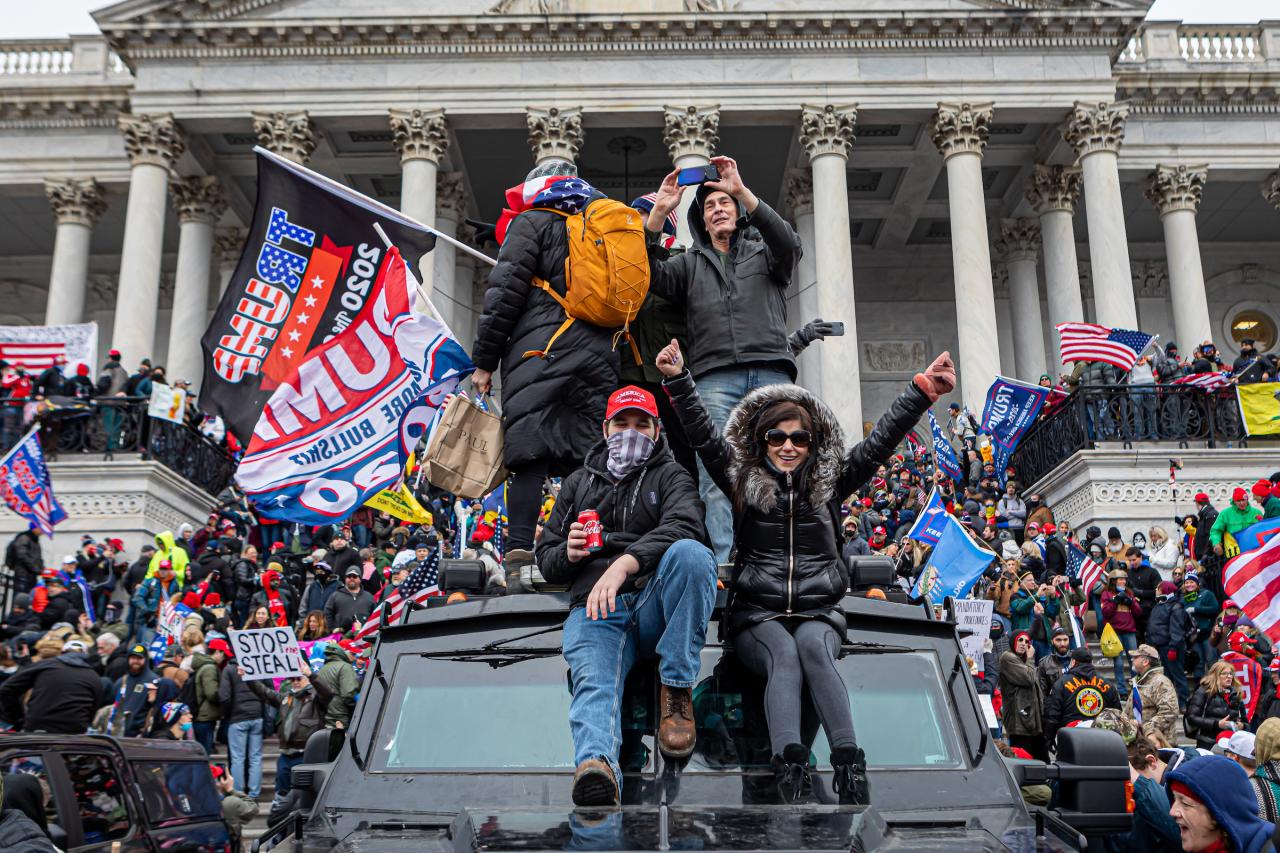Cracks appear in Maga world over foreign worker visas, revealing deep divisions within the movement. This isn’t just about economics; it’s a clash of ideologies, anxieties about cultural change, and power struggles within the MAGA base. We’ll explore the economic arguments for and against expanding foreign worker programs, examining the concerns about job displacement for American workers alongside the potential benefits to the US economy.
Beyond the numbers, we’ll delve into the social anxieties surrounding immigration and cultural assimilation, looking at how these concerns are framed and debated within the MAGA sphere. Finally, we’ll analyze the political ramifications of these differing stances, exploring the internal conflicts and power dynamics at play.
The debate over foreign worker visas highlights a fundamental tension within the MAGA movement: balancing its core principles of economic nationalism and protectionism with the realities of a globalized economy and the need for skilled labor. This internal struggle exposes vulnerabilities and reveals cracks in the seemingly unified front of the MAGA movement, making it a fascinating case study in political dynamics and ideological conflict.
The Economic Argument

The debate surrounding foreign worker visas in the MAGA movement is deeply intertwined with economic considerations. Proponents and opponents alike frame their arguments around the impact on the US economy, leading to a complex and often contentious discussion. Understanding these differing perspectives requires examining the claimed benefits and drawbacks, as well as the evidence used to support each side.
Economic Benefits Attributed to Foreign Workers
Proponents of expanded foreign worker visa programs often highlight several key economic benefits. They argue that foreign workers fill labor shortages in critical sectors, boosting overall productivity. This influx of skilled and unskilled labor can lead to increased economic output, as businesses can access the workforce needed to meet demand. Furthermore, foreign workers often contribute significantly to tax revenue, supporting government services and infrastructure.
So, the MAGA world’s all in a tizzy about foreign worker visas, right? It’s a pretty big deal for them. Meanwhile, completely unrelated, sad news broke today: Sportscaster Greg Gumbel dies at age 78. Back to the visa issue, though – the infighting within the MAGA camp over this is intense, showing some pretty significant cracks in their usual united front.
Finally, some argue that foreign workers contribute to innovation and entrepreneurship, bringing new skills and ideas to the US economy. These arguments suggest a net positive impact on economic growth and prosperity.
Economic Concerns Regarding Foreign Worker Displacement
Opponents of expanded foreign worker programs express significant concerns about potential negative economic consequences, primarily focusing on the displacement of American workers. The fear is that employers might prefer to hire foreign workers at lower wages or with more flexible work arrangements, leading to unemployment or suppressed wages for domestic workers. This is particularly concerning in sectors where there’s already high unemployment or low wages among native-born Americans.
Moreover, concerns exist about the potential strain on social services and infrastructure if the influx of foreign workers outpaces the capacity to provide adequate support. These arguments emphasize the potential for negative economic consequences for a segment of the American workforce.
Comparison of Economic Arguments Within the MAGA Movement
Within the MAGA movement, the debate over foreign worker visas reflects a broader tension between prioritizing economic growth and protecting the interests of American workers. While some within the movement acknowledge the potential economic benefits of foreign workers, particularly in filling labor shortages, a significant portion prioritizes the protection of American jobs and wages. This often leads to a strong emphasis on the potential for displacement and the need for stricter immigration policies to safeguard American workers.
The economic arguments are thus framed differently, with some emphasizing the overall economic gains while others focus on the potential negative impacts on specific groups of American workers.
So, the Maga world’s all in a tizzy about foreign worker visas, right? It’s a pretty big deal for them. Meanwhile, someone in California just won a massive $1.22 billion in the Mega Millions lottery – check out the details here: Winning ticket for $1.22 billion Mega Millions jackpot sold in California. I guess that’s one way to forget about immigration debates for a while; but back to the visa kerfuffle, the fallout is likely to be interesting.
Summary of Economic Arguments for and Against Foreign Worker Visas, Cracks appear in Maga world over foreign worker visas
| Pro-Visa Argument | Con-Visa Argument | Source/Evidence |
|---|---|---|
| Increased economic output due to filling labor shortages | Displacement of American workers leading to unemployment or wage suppression | Studies by the National Academies of Sciences, Engineering, and Medicine on the economic impacts of immigration |
| Increased tax revenue from foreign workers | Strain on social services and infrastructure | Data from the U.S. Department of the Treasury on tax revenue and government spending on social services |
| Contribution to innovation and entrepreneurship | Potential for wage depression in certain sectors | Research on the entrepreneurial activities of immigrants and studies on the impact of immigration on wages in specific industries |
The Social Argument

The debate surrounding foreign worker visas within the MAGA sphere often transcends the purely economic. Social anxieties about cultural change, integration challenges, and the strain on existing resources play a significant role in shaping opinions. Understanding these social concerns is crucial to a complete picture of the issue.The influx of immigrants, regardless of visa type, can trigger social anxieties within communities, particularly among those who feel their cultural identity is threatened or who perceive increased competition for resources.
These anxieties are often amplified by existing social and economic inequalities, leading to a sense of displacement or resentment.
Social Anxieties and Cultural Assimilation
Concerns about cultural assimilation are frequently voiced within the MAGA base. The fear is that an influx of foreign workers might lead to the erosion of existing cultural norms and traditions. This concern isn’t necessarily rooted in overt racism or xenophobia, but rather in a desire to maintain a sense of community identity and shared values. Narratives often focus on the perceived incompatibility of different cultural practices, leading to fears about social cohesion.
For example, anxieties about language barriers hindering effective communication or differing social customs causing friction within communities are common themes.
Strain on Social Services and Infrastructure
Another significant social concern revolves around the potential strain on social services and infrastructure. Increased immigration, it is argued, could lead to greater demand for schools, healthcare, and public transportation, potentially overwhelming existing resources. This concern is often framed in terms of taxpayer burden, with the argument that increased immigration translates to higher taxes to support these services.
While increased demand is a possibility, the actual impact depends on factors such as the immigrants’ economic contribution and the efficiency of service delivery. For instance, some immigrant communities may contribute significantly to the tax base while requiring relatively few social services. Conversely, communities with inadequate infrastructure may struggle regardless of immigration levels.
Framing the Debate on Foreign Workers
The MAGA sphere often frames the debate on foreign workers using narratives that emphasize potential negative social consequences. Terms like “invasion,” “cultural dilution,” and “strain on resources” are frequently used to evoke negative emotions and reinforce pre-existing biases. These narratives often simplify complex issues, ignoring the positive contributions of immigrants and focusing solely on potential downsides. For example, the narrative of foreign workers “taking jobs” from native-born citizens often overlooks the fact that many fill jobs that native-born workers are unwilling or unable to do.
So, the cracks are showing in the MAGA world over foreign worker visas – a lot of infighting, you know? It’s kind of like the Sacramento Kings situation; check out this article about how they just fired their coach, Struggling Kings fire third-year head coach Mike Brown – ESPN , a pretty dramatic move reflecting internal struggles.
The visa issue shows similar internal pressures within the MAGA camp, leading to a lot of uncertainty.
Potential Social Impacts of Foreign Worker Programs
It’s important to consider both the potential positive and negative social impacts of foreign worker programs.
- Positive Impacts: Increased cultural diversity enriching communities, filling labor shortages in essential sectors, fostering innovation and entrepreneurship through new skills and perspectives, and strengthening international relationships.
- Negative Impacts: Potential strain on social services and infrastructure in some areas, challenges in cultural integration, and increased competition for certain jobs in specific sectors. The severity of these impacts is highly dependent on effective government planning and community engagement.
The Political Argument
The MAGA movement, while unified by certain core beliefs, displays significant internal divisions on the issue of foreign worker visas. These divisions aren’t simply about differing opinions; they represent clashes of political priorities and power struggles within the movement itself, potentially impacting the future direction of immigration policy within the broader Republican party. Understanding these fractures is crucial to grasping the complexities of the MAGA approach to immigration.The differing stances on foreign worker visas within the MAGA movement stem from competing interests and priorities.
Some factions prioritize economic growth and the needs of businesses, advocating for a more lenient approach to visa programs. Others emphasize protecting American jobs and maintaining a specific national identity, favoring stricter restrictions. These conflicting viewpoints lead to internal debates and power struggles that affect the overall political strategy of the movement.
Differing Views Among Prominent MAGA Figures
Several prominent figures within the MAGA sphere have publicly expressed contrasting views on foreign worker visas. While some, often associated with business-oriented wings of the movement, have argued for the economic benefits of skilled immigration, others, often appealing to a more protectionist base, have voiced concerns about the impact on American workers. These disagreements highlight the internal tensions within the movement and the challenges in formulating a unified policy position.
For example, while some voices within the MAGA movement have openly supported temporary work visas for specific industries facing labor shortages, others have expressed strong opposition to all forms of foreign worker programs, regardless of their economic implications. This divergence of opinion creates significant internal political friction.
Political Consequences of Differing Stances
The internal divisions on immigration policy within the MAGA movement have significant political consequences. Differing stances on foreign worker visas can lead to factionalism, weakening the movement’s overall influence and potentially fracturing its voting base. This internal conflict could also lead to strategic miscalculations during elections, as candidates attempt to balance the competing interests of different factions. For instance, a candidate who takes a strong anti-immigration stance might alienate business-friendly voters, while a more moderate approach could disappoint those prioritizing protectionist policies.
The outcome of these internal struggles could significantly influence the future trajectory of the Republican party’s immigration platform.
Comparison of Approaches Within the MAGA Movement
Different factions within the MAGA movement employ distinct approaches to immigration policy. Some advocate for a complete overhaul of the current immigration system, emphasizing stricter border controls and a reduction in all forms of immigration, including temporary worker programs. Others favor a more nuanced approach, acknowledging the economic benefits of skilled immigration while still advocating for stricter regulations and enforcement.
This difference in approach reflects the diverse interests and priorities within the movement, highlighting the challenges in developing a unified and coherent immigration platform. The tension between these approaches often plays out in internal debates and policy discussions, impacting the movement’s overall political strategy.
Visual Representation of Internal Divisions
Imagine a circle representing the overall MAGA movement. This circle is divided into two unequal segments. The larger segment, colored dark red, represents the faction prioritizing protectionist policies and stricter immigration controls, labeled “Restrictionist Wing.” The smaller segment, colored a lighter shade of red, represents the faction emphasizing economic benefits of skilled immigration and a more moderate approach, labeled “Pro-Business Wing.” A thin, jagged line separating the two segments symbolizes the ongoing internal conflict and lack of complete unity on immigration policy.
The overall circle is Artikeld in bold black to represent the overarching MAGA identity, while the internal divisions are clearly depicted by the color and size differences of the segments. The labels clearly indicate the different approaches to immigration policy held by each faction.
The Legal Argument
The debate surrounding foreign worker visas within the MAGA movement isn’t just about economics or social impact; it’s deeply intertwined with legal interpretations and policy proposals. Understanding the existing legal framework and the various legal challenges is crucial to grasping the internal divisions within the movement.The current legal framework governing foreign worker visas in the United States is complex and multifaceted, encompassing numerous statutes, regulations, and court precedents.
Key legislation includes the Immigration and Nationality Act (INA), which establishes various visa categories for temporary and permanent employment, each with specific requirements and limitations. These categories range from H-1B visas for specialty occupations to H-2A and H-2B visas for temporary agricultural and non-agricultural workers. The administration of these programs falls under the purview of U.S. Citizenship and Immigration Services (USCIS) and the Department of Labor (DOL), leading to potential inconsistencies and differing interpretations of the law.
Specific Legal Challenges and Loopholes
Numerous legal challenges and perceived loopholes fuel the debate within the MAGA movement. One frequent concern involves the H-1B visa program, with accusations of employers exploiting loopholes to displace American workers or depress wages. Critics point to instances of companies using H-1B visas to hire foreign workers at lower salaries than they would pay U.S. citizens, or using the program to circumvent labor laws.
Another area of contention involves the H-2A and H-2B programs, where accusations of exploitation and abuse of temporary agricultural workers are common. The lack of robust oversight and enforcement mechanisms, coupled with bureaucratic hurdles, contributes to the perception of loopholes and unfair practices. Furthermore, the interpretation of “specialty occupation” for H-1B visas remains a source of contention, with differing views on what constitutes a qualified professional.
Differing Interpretations and Internal Divisions
Different interpretations of existing laws significantly contribute to the internal divisions within the MAGA movement. Some factions advocate for stricter enforcement of existing regulations, arguing that current laws are sufficient but poorly implemented. They believe a more rigorous vetting process and stronger penalties for violations would address the perceived problems. Others argue that the existing legal framework is fundamentally flawed and requires significant reform, proposing stricter quotas, higher wage requirements, or even abolishing certain visa categories altogether.
This divergence in legal interpretation leads to disagreements on the appropriate policy response, fostering internal conflict.
Proposed Policy Changes and Their Implications
Several policy changes regarding foreign worker visas are being debated within the MAGA movement. These proposals often reflect differing priorities and interpretations of the legal and economic implications of immigration.
| Proposal | Description | Potential Benefits | Potential Drawbacks |
|---|---|---|---|
| Stricter Enforcement of Existing Laws | Increased scrutiny of visa applications, stricter penalties for violations, and enhanced oversight of employers. | Reduced exploitation of workers, fairer competition for American workers, potential increase in domestic wages. | Increased bureaucratic burden, potential delays in processing visa applications, potential for discrimination. |
| Raising Wage Requirements | Mandating higher minimum wages for foreign workers to ensure they don’t undercut American workers. | Protection of American workers’ wages, reduced incentive for employers to hire foreign workers at lower salaries. | Potential reduction in the number of available foreign workers, increased labor costs for businesses, potential impact on industries reliant on foreign labor. |
| Reducing Visa Quotas | Lowering the number of visas issued annually for certain categories. | Reduced competition for jobs, potential increase in domestic employment in specific sectors. | Labor shortages in industries reliant on foreign workers, potential increase in labor costs, negative impact on economic growth. |
| Prioritizing Specific Skill Sets | Focusing visa allocation on workers with skills in high-demand sectors experiencing labor shortages. | Addressing specific skill gaps, promoting economic growth in strategic sectors. | Potential neglect of other sectors facing labor challenges, potential for overlooking qualified workers in less-prioritized fields. |
Final Review

The fissure over foreign worker visas within the MAGA movement isn’t simply a policy disagreement; it’s a reflection of deeper ideological and political fractures. The economic arguments, while significant, are intertwined with anxieties about cultural change and the perceived threat to American identity. The resulting internal conflict underscores the complexities of navigating immigration policy within a populist movement, revealing the limitations of simplistic narratives and the ongoing struggle to reconcile competing priorities.
Understanding this internal debate is crucial for comprehending the future trajectory of the MAGA movement and its influence on American politics.
Commonly Asked Questions: Cracks Appear In Maga World Over Foreign Worker Visas
What are the specific types of foreign worker visas being debated?
The debate encompasses various visa categories, including H-1B visas for skilled workers, agricultural worker visas, and others, each with its own set of regulations and associated controversies.
How do the proposed policy changes differ within the MAGA movement?
Some factions advocate for stricter enforcement of existing laws and reduced visa quotas, while others propose more targeted reforms or even expansion in specific sectors facing labor shortages.
What role do lobbying groups play in shaping the debate?
Business groups advocating for access to skilled labor often clash with labor unions concerned about job displacement, influencing the political discourse and policy proposals.